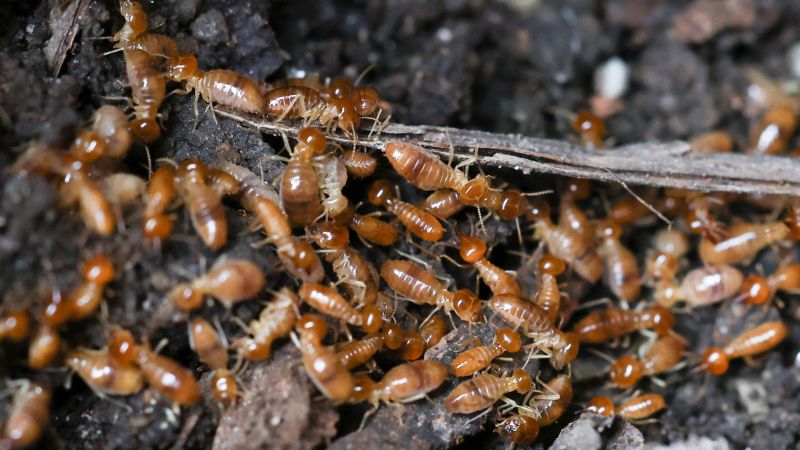Expert Picks For Termite Inspection Equipment And Tools
Choose from highly recommended products that provide precise detection and ease of use during termite inspections.
 Termite inspections are a crucial component of maintaining the integrity of a property and preventing extensive damage caused by subterranean and drywood termites. Various tools and products are designed to assist inspectors and homeowners in identifying signs of termite activity, from visual inspection aids to advanced detection devices. Having the right equipment can improve the accuracy and efficiency of inspections, ensuring early detection and timely treatment.
Termite inspections are a crucial component of maintaining the integrity of a property and preventing extensive damage caused by subterranean and drywood termites. Various tools and products are designed to assist inspectors and homeowners in identifying signs of termite activity, from visual inspection aids to advanced detection devices. Having the right equipment can improve the accuracy and efficiency of inspections, ensuring early detection and timely treatment.
Top Overall Option
Comprehensive Multi-Method Inspection Kit
A versatile inspection kit that combines moisture meters, infrared thermal cameras, and acoustic sensors, enabling thorough assessments of potential termite activity. Its multi-faceted approach allows users to detect signs of infestation through different methods, increasing the likelihood of early detection. Designed for both professionals and serious homeowners, this kit offers detailed instructions and reliable tools for effective inspections.
Types of Products For Termite Inspections
Moisture Meters
Devices that measure moisture levels in wood and building materials to identify areas prone to termite activity.
Infrared Thermal Cameras
Cameras that detect temperature variations indicating hidden infestations behind walls or within structures.
Acoustic Emission Detectors
Tools that listen for sounds produced by termites within wood or walls, aiding in non-invasive detection.
Visual Inspection Flashlights
High-intensity flashlights designed to illuminate dark areas and reveal signs of termite activity.
Magnifying Glasses
Magnifiers that assist in closely examining wood surfaces and detecting small signs of infestation.
Moisture Testing Pens
Portable pens that quickly assess moisture content in wood and surfaces during inspections.
Borescopes
Flexible cameras that allow inspectors to view inside walls and hard-to-reach areas for signs of termites.
Chemical Detection Kits
Test kits that identify chemical residues or signs associated with termite activity in soil or wood.
Soil Moisture Sensors
Sensors placed in soil around a property to monitor moisture levels that attract termites.
Sound Amplifiers
Devices that amplify sounds produced by termites within wood or structures for easier detection.
Popular Choices
Widely used for detecting temperature anomalies indicative of termite activity behind walls and within structures.
Commonly employed tools for quickly assessing moisture levels in building materials during inspections.
Popular for non-invasive detection of termite sounds within wooden structures.
Frequently used for visual inspections inside walls and hard-to-reach areas.
Essential for illuminating dark inspection sites and spotting signs of infestation.
Trending for their ability to identify chemical markers associated with termite presence.
Portable and convenient tools for quick moisture assessments during inspections.
Popular for their ability to visualize temperature differences and locate hidden infestations.
Used to detect termite activity through sound wave amplification within wood or structures.
Commonly employed to monitor moisture in soil around foundations, attracting termites.
Traditional visual inspection tools include flashlights, magnifying glasses, and moisture meters, which help identify signs such as mud tubes, wood damage, and moisture anomalies. In addition to these, electronic detection devices such as acoustic sensors and thermal imaging cameras have gained popularity for their ability to identify hidden infestations without invasive procedures. These tools can detect subtle temperature differences or sound waves produced by termite activity, offering a non-destructive approach to inspection.
For those seeking comprehensive inspection solutions, integrated kits that combine multiple detection methods are available. These kits often include moisture meters, infrared cameras, and specialized probes, providing a versatile set of tools for thorough assessments. Proper training and understanding of how to interpret data from these devices are essential to maximize their effectiveness. Investing in quality products can aid in early detection, potentially saving property owners significant repair costs down the line.
Choosing the right products for termite inspections depends on various factors such as the size of the property, the type of construction, and the inspector’s experience level. While some tools are suitable for professional pest control operators, others are designed for homeowners or DIY enthusiasts. Ensuring compatibility with existing inspection procedures and considering ease of use are important aspects when selecting products. Ultimately, a combination of reliable detection devices and traditional inspection methods can provide a comprehensive approach to identifying termite activity.
Key Buying Considerations
- Type of detection technology: Choose between visual, moisture, thermal, or acoustic methods based on inspection needs.
- Ease of use: Consider whether the product is user-friendly for amateurs or requires professional training.
- Accuracy and reliability: Look for products with positive user feedback and clear detection capabilities.
- Portability: Compact and lightweight tools are preferable for on-site inspections and ease of transport.
- Battery life and power source: Ensure devices have sufficient battery life for extended inspections.
- Compatibility with other tools: Some products work best when used in conjunction with other inspection devices.
- Durability and build quality: Inspection tools should withstand frequent use and various environmental conditions.
- Price point: Balance budget constraints with the need for reliable, effective tools.
- Data storage and connectivity: Devices with data logging or Bluetooth capabilities can facilitate record-keeping.
- Training and support: Consider whether instructional resources or customer support are available for complex tools.
- Application scope: Determine if the product is suitable for residential, commercial, or industrial inspections.
- Detection range: Verify the effective range of detection, especially for thermal and acoustic devices.
- Maintenance requirements: Choose products that are easy to calibrate and maintain over time.
- Certification and standards: Look for tools that meet industry standards for accuracy and safety.
- Warranty and after-sales service: Reliable warranty options can provide peace of mind for costly equipment.
